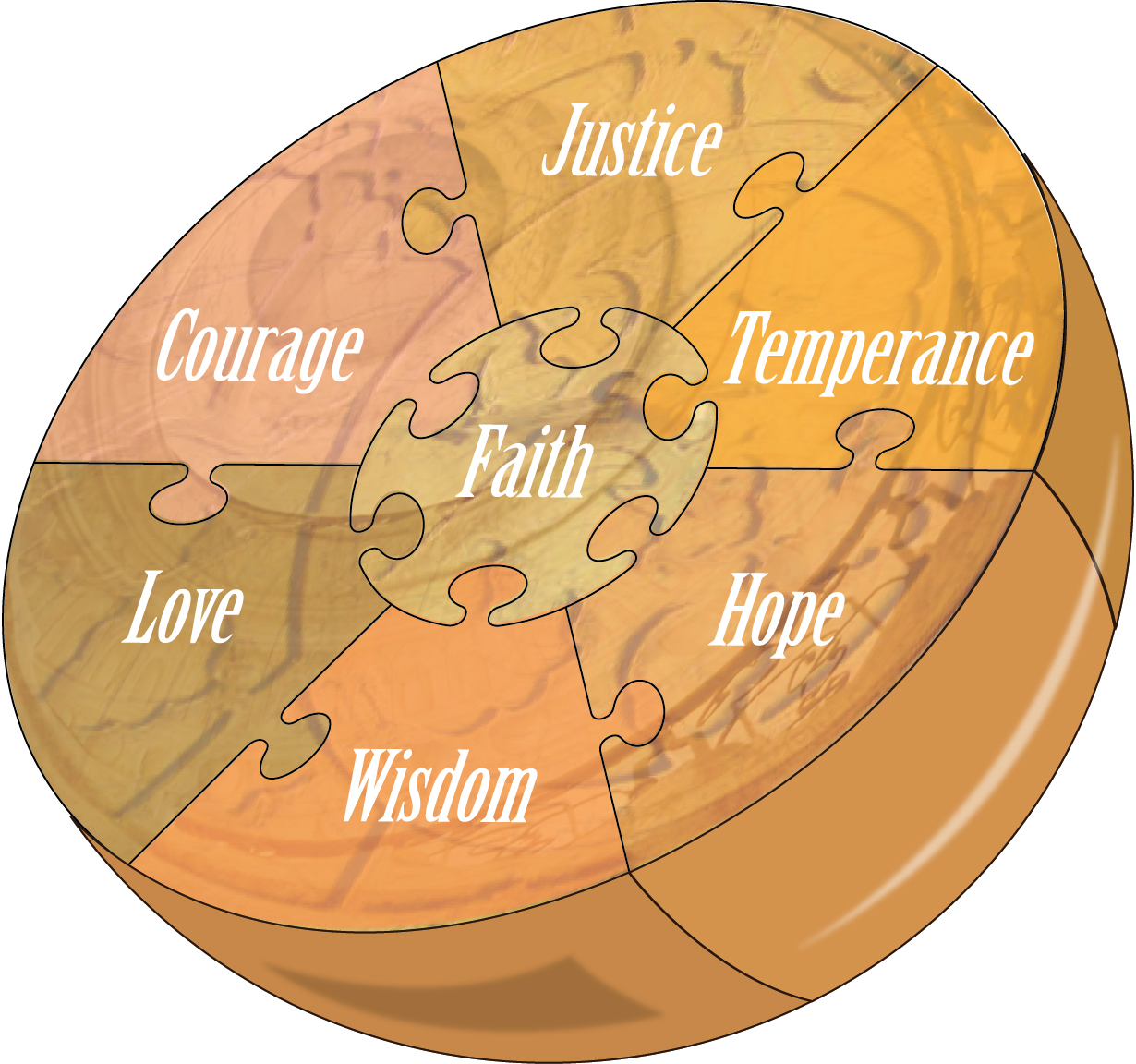Hack:
Character Is the Key to Reinventing Leadership and the Organization?
It troubles me that it will only take a few hundred words to share the profound reality that leadership is inextricably tied to individual character. Such an important subject should take volumes. However, the brutal and simple reality is that after countless hours of leading, consulting, coaching and advising, I become more convinced with each interaction that success is both enabled and stifled by leadership, and that leadership is at its center a matter of personal character. In our rush to find ever-increasing efficiency and effectiveness in organizations, we have lost sight of the power of great leadership and what it takes to develop that leadership. We can, however, regain our vision by proactively and positively developing the character of those expected to lead.
It would be nice if becoming an effective leader were easier. It would be nice if all the ideas and techniques you have read about or experienced in workshops were as simple to use as the author or presenter made them seem. However, the real world is something else again. Becoming a great leader is hard work. Being a leader is a tremendous responsibility. The challenges of leadership are numerous, the demands are steep, but the rewards are magnificent.
Teachers of leadership have too often softened the reality of leadership, boiling it down to formulas, tips and tricks. Leadership development is a lifelong pursuit in which time and experience matter greatly. Like any other long-term process, it is fraught with pain and exhilaration. To complicate the process further, the development of leadership ability does not even begin with leadership. It begins with character. The ability to lead is built on a foundation of character. Every leader leads from his or her character, and, consequently, the shaping of a leader’s character is paramount for any organization looking to distinguish itself.
In 1987, I joined a failing company that was part of a crippled industry: I went to work as a commercial lending officer for a savings and loan. I was young, my career was young, and I was fortunate that this move was not the end of my banking career. Nonetheless, motivated to be part of the industry’s newly expanded powers in commercial lending, I joined the staff of a savings and loan. Little did I understand that the recently granted lending powers were a final attempt on the part of regulators to save an industry that was terminally ill. The savings and loan industry had been in trouble for years, and the demise of that sector ultimately cost the U.S. taxpayers $150 billion in 557 institutional failures. The major causes of the industry’s collapse were:
- Changing market conditions
- Over-investment in single-family residential mortgages
- Expanded regulatory authority
- Weak regulatory oversight
Of those four major causes, only the first is economic. The other three relate to leadership. The concentration of investment in mortgages, the expansion of powers to weak institutions, and continued poor regulatory oversight were all leadership decisions. We have seen many similar leadership decisions in our current financial-sector crisis.
Here is the key: The leadership decisions made as part of both the past and the current financial crises have not really been a matter of leadership ability. They are a matter of character. Leaders did not show the strength to stand against the thread of greed that weaves throughout capitalistic systems. Neither did they demonstrate a willingness to learn from past mistakes.
Beyond this illustration, the daily headlines and your own files overflow with examples of leaders whose character shortcomings crippled their ability to lead effectively. Based on those numerous examples, it would be easy to approach character-based leadership development from a position of fear, with an eye to toward mitigating the risk that leaders with poor character represent. We see this approach in the endless codes of conduct produced to keep people from doing the wrong things. The brutal reality is this: Policies, processes, and regulations will not curb the behavior of leaders whose character is deficient.
The risk-mitigation approach to character and leadership development is appealing, because it is easier to see character clearly when it is fractured, rather than when it is whole. However, the more powerful (and more difficult) approach is not to focus on the endless tales of failure, but to choose a character model to serve as the basis for your leadership development efforts. This positive approach permeates my book, The Character of Leadership: An Ancient Model for a Quantum Age. Although I use occasional examples of character failure to illustrate certain points, for the most part, the book advocates a model upon which leaders can build their leadership and do so with the confidence of two millennia of history as support.
To tackle the challenge for great leadership by building great character I first need to share my definition of leadership.
Leadership is the ability to move a group of people through non-coercive means to an end that is, in the long-run best interest of everyone.
This definition of leadership challenges and inspires. It challenges leaders who see their ability tied to position and power. It encourages leaders who realize that the most valuable tool of any leader is influence and that the path to authentic influence winds through the leader’s character.
The Character of Leadership model has two basic propositions. First, leadership is inside out; your character gives rise to your leadership. Since character fuels leadership, the exploration of character is of paramount concern to every serious leader and to every organization serious about leadership development. Second, context is everything. This means that every leadership setting is different, and the leader’s behavior must adjust to fit the group and the situation that the leader is part of and responsible for.
I did not create the Character of Leadership model; I discovered it. The model has its origins among the ancient philosophers. Greek thinkers established that character was comprised of four cardinal virtues (we call them elements): Courage, Temperance, Justice, and Wisdom. First-century leaders added Hope, Love, and Faith to create the complete set of the elements that make up human character.
You will see the graphic representation of the Character of Leadership model shows Faith as the central element. Faith, the unique ability of human beings to unwaveringly believe in something they cannot rationally prove, is at the core of a leader’s character. I am not speaking of religion or even of spirituality. I mean that each of us has a belief system that gives rise to how the rest of the elements of character demonstrate themselves in us. In other words, what I believe will reveal itself in the way I demonstrate Justice, Temperance, Hope, Wisdom, Love, and Courage. The rest of the elements are in no particular order, but you will see that they link together like puzzle pieces. Depicting the model in this way has two purposes: first, to show that character is real and not just some abstract philosophical construct; and second, to illustrate how all of the elements are inextricably linked. Human character is the whole of the seven elements working together.
The challenge with the ancient model of human character was to relate it to leadership and then to articulate a set of behaviors based on each element that would allow leaders to begin a character-based leadership development journey. To do this, each of the elements is described in leadership terms. From a leadership perspective:
Faith is leading from a clear set of positive core values that are demonstrated through leadership actions.
Justice is leading by doing what is right even when it is difficult and costly; it is leading in a selfless manner andfostering personal and team accountability.
Temperance is leading with personal humility, passion and self-control.
Hope is leading by sincerely and convincingly articulating a bright future, especially when the immediate circumstances look bleak.
Wisdom is leading by effectively applying accumulated knowledge and experience to current situations.
Love is leading by demonstrating a genuine concern, care, and compassion for people.
Courage is leading by boldly seizing opportunities and firmly dealing with challenges.
Beyond these descriptions, the Character of Leadership model contains thirty-six behaviors that serve as a beginning for a character-based leadership program. Understand that the seven elements and the thirty-six behaviors cannot be the whole of what leadership is or should be. There are other leadership abilities specific to your organization that will need to augment the model.
The most powerful tool a leader has is influence. The challenge for all leaders is that influence is not acquired through position, experience or even expertise. Influence is acquired because people give it to you. They give you influence over themselves because of your character and the level of authenticity.
I recently watched a leader demonstrate authenticity which cultivated influence with his management team. This leader is working to move from a command and control philosophy of leadership to one of influence. At the close of a recent strategic planning session, the leader shared in front of the group that he was nervous, because the new skills he is learning and demonstrating don’t feel natural, and that is scary. A leader focused on power never admits to fear because, in that person’s mind, stating such a thing appears weak. For the influential leader, the admission of fear is not a sign of weakness; it is a sign of strength, strength of character. Based on that admission alone, my client increased his influence with his team and improved the performance of his organization. He is becoming a leader people want to follow instead of a leader that people have to follow.
At most, the Character of Leadership model serves as the beginning of your organization’s character-based leadership journey. At the least, the model should spark discussion in your organization about whether your leadership development program contains a strong character component. As we grapple with the challenges and complexities in today’s multi-dimensional, global organizations, I hope that using the Character of Leadership model in your leadership development program will provide a beacon from which you can navigate, because the challenges we face today are not economic, environmental, social, or legal; they are challenges of character and leadership.

"Leadership is the ability to move a group of people through non-coercive means to an end that is, in the long-run best interest of everyone."
Sometimes you really need a coercive means!
- Log in to post comments
The need for a coercive approach can be very strong but I would submit that since coercion is based in fear that coercion is really management, not leadership.
- Log in to post comments





You need to register in order to submit a comment.